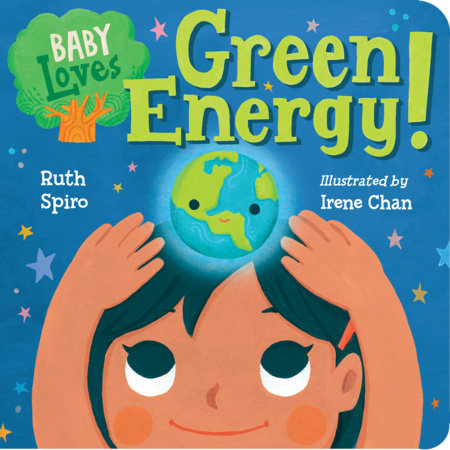Big, brainy science for the littlest listeners.
Accurate enough to satisfy an expert, yet simple enough for baby, this clever board book explores climate change and the ways we can work to protect our planet for all babies. Highlighting many green energy options, baby learns how to help our environment. Beautiful, visually stimulating illustrations complement age-appropriate language to encourage baby's sense of wonder.
With tongue firmly in cheek, the Baby Loves Science series is a fun-filled introduction to STEM concepts for babies, toddlers, and their grown-ups.
On sale: October 16, 2018
Age: 0-3 years
Grade: Up to Preschool
Page count: 20 Pages
ISBN: 9781580899260
Ruth Spiro is the author of the Baby Loves Science series, published by Charlesbridge. These adorably illustrated board books contain expert-reviewed science, yet are simple enough for the very youngest readers. Another new picture book series, Made by Maxine, will be published by Penguin/Dial beginning in 2018. Her debut picture book,
Lester Fizz, Bubble-Gum Artist (Dutton), won awards from Writer's Digest and Willamette Writers and was a Bank Street College of Education Best Book of the Year. Ruth is a frequent speaker at schools and conferences, and recent presentations include the Early Childhood STEM Conference at CalTech and the Los Angeles Times Festival of Books. Visit Ruth on her website here.
Irene Chan is the illustrator of
Baby Loves Quarks! and
Baby Loves Aerospace Engineering! She is also an art director, designer, artist, and amateur photographer. She currently lives in Atlanta, GA. Visit Irene at www.eneri.net.
In this addition to the Baby Loves Science board book series, Spiro uses a familiar reference to create a global warming analogy: "Baby has a blanket...When Baby puts the planet on, she feels warm...The earth has a blanket, too. Just like Baby! The earth's blanket is air." Chan illustrates in cheerful images, including a smiling, anthropomorphic Earth; the baby, who has blue-black hair and a serene expression, shows concern as she learns that greenhouse gases are making the Earth too hot under its blanket. A spread shows vehicles and factories puffing out cloudy emissions, leading to the question "How can people help?" Chan suggests green energy options with images of wind turbines and solar panels, and lists tips for how family members of all ages can help the Earth (turning out lights, recycling). A timely primer for early ecologists.
—
Publishers Weekly











